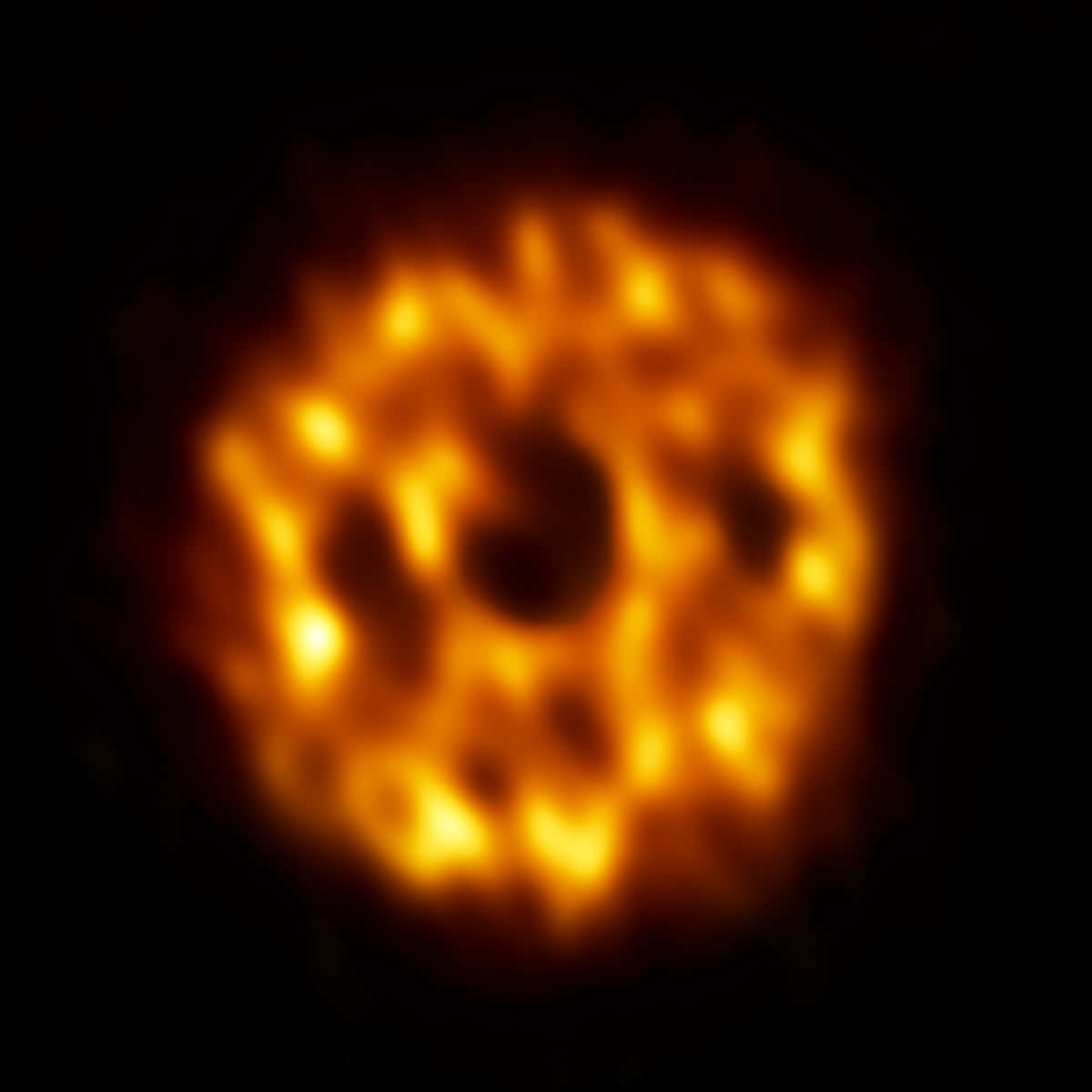A planetary system’s early days readily tell of turmoil. Giant planets are swept from distant birthplaces into sizzling orbits close to their host star. Others are blasted away from their star into the darkness of space. And smaller bodies, like asteroids and comets, are being traded around constantly.
Astronomers using the Atacama Large Millimeter/submillimeter Array (ALMA) have seen the latter: swarms of Pluto-size objects turning to dust around a young star. And the image is remarkable.
“This system offers us the chance to study an intriguing time around a young, Sun-like star,” said coauthor Stuartt Corder and ALMA Deputy Director in a news release. “We are possibly looking back in time here, back to when the Sun was about 2 percent of its current age.”
The young star, HD 107146, is located roughly 90 light-years from Earth in the direction of the constellation Coma Berenices. Although the star itself is visible in any small telescope, ALMA can probe the star’s radically faint protoplanetary disk. This is the star’s dusty cocoon that coalesces into planets, comets and asteroids.
ALMA’s image revealed an unexpected bump in the number of millimeter-size dust grains far from the host star. This highly concentrated band spans roughly 30 to 150 astronomical units, the equivalent of Neptune’s orbit around the Sun to four times Pluto’s orbit.
So where is the extra dust coming from?
Typically, dust in the debris disk is simply left over material from the formation of planets. Early on, however, Pluto-size objects (otherwise known as planetesimals) will collide and blast themselves apart, also contributing to the dust. Certain models predict that this leads to a much higher concentration of dust in the most distant regions of the disk.
Although this is the case for HD 107146, “this is the opposite of what we see in younger primordial disks where the dust is denser near the star,” said lead author Luca Ricci from the Harvard-Smithsonian Center for Astrophysics. “It is possible that we caught this particular debris disk at a stage in which Pluto-size planetesimals are forming right now in the outer disk while other Pluto-size bodies have already formed closer to the star.”
Adding to this hypothesis is the fact that there’s a slight depression in the dust at 80 astronomical units, or twice Pluto’s average distance from the Sun. This could be a slight gap in the dust, where an Earth-size planet is sweeping the area clear of a debris disk.
If true, this would be the first observation of an Earth-size planet forming so far from its host star. But for now that’s a big if.
The results will be published in the Astrophysical Journal and are available online.


“this is the opposite of what we see in younger primordial disks where the dust is denser near the star,”
Theory, theory, theory … what we so adamantly propose today will be proven nonsense tomorrow. These ideas are merely one possible explanation, which will be followed by other competing and mutually exclusive explanations in the future, which will be just as adamantly proclaimed. Keep this in mind, and that this is the process of science, and the journey towards what is closer to the real truth.
Shannon, it sounds even more like supposition than theory. Have they explained how they know (or think) that the planetesimals are Pluto-size?
What makes them think that planetesimals have formed and now are banging themselves into dust?
How do they know that the farther out body is earth-size?
It seems remarkable that only a couple of years ago we counldn’t even discern alien planets that were as large as Jupiter and now we’re talking as if we are actually seeing Pluto-size exoplanets?